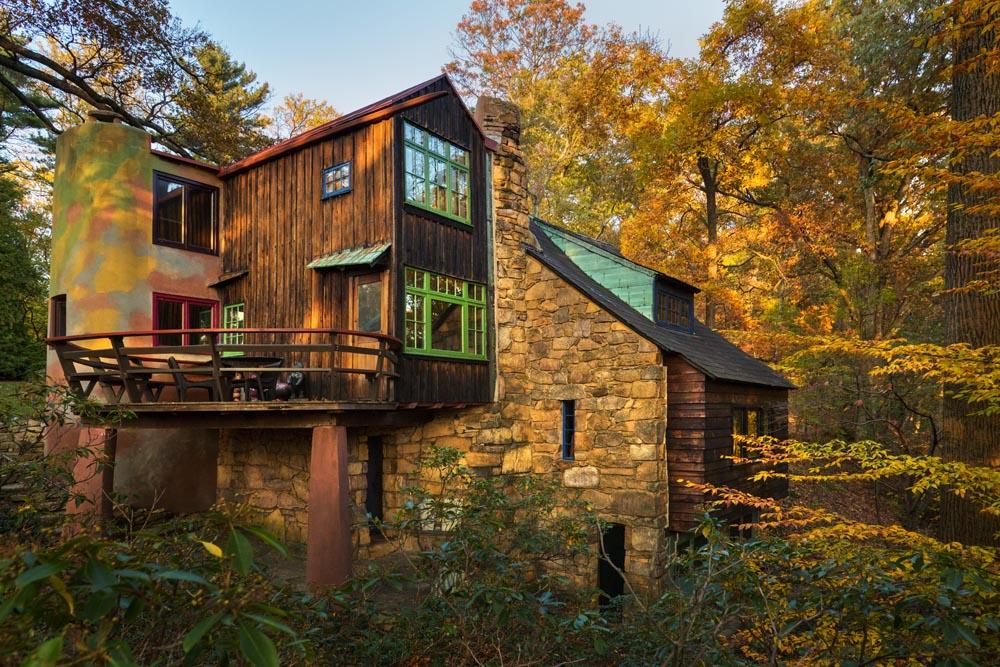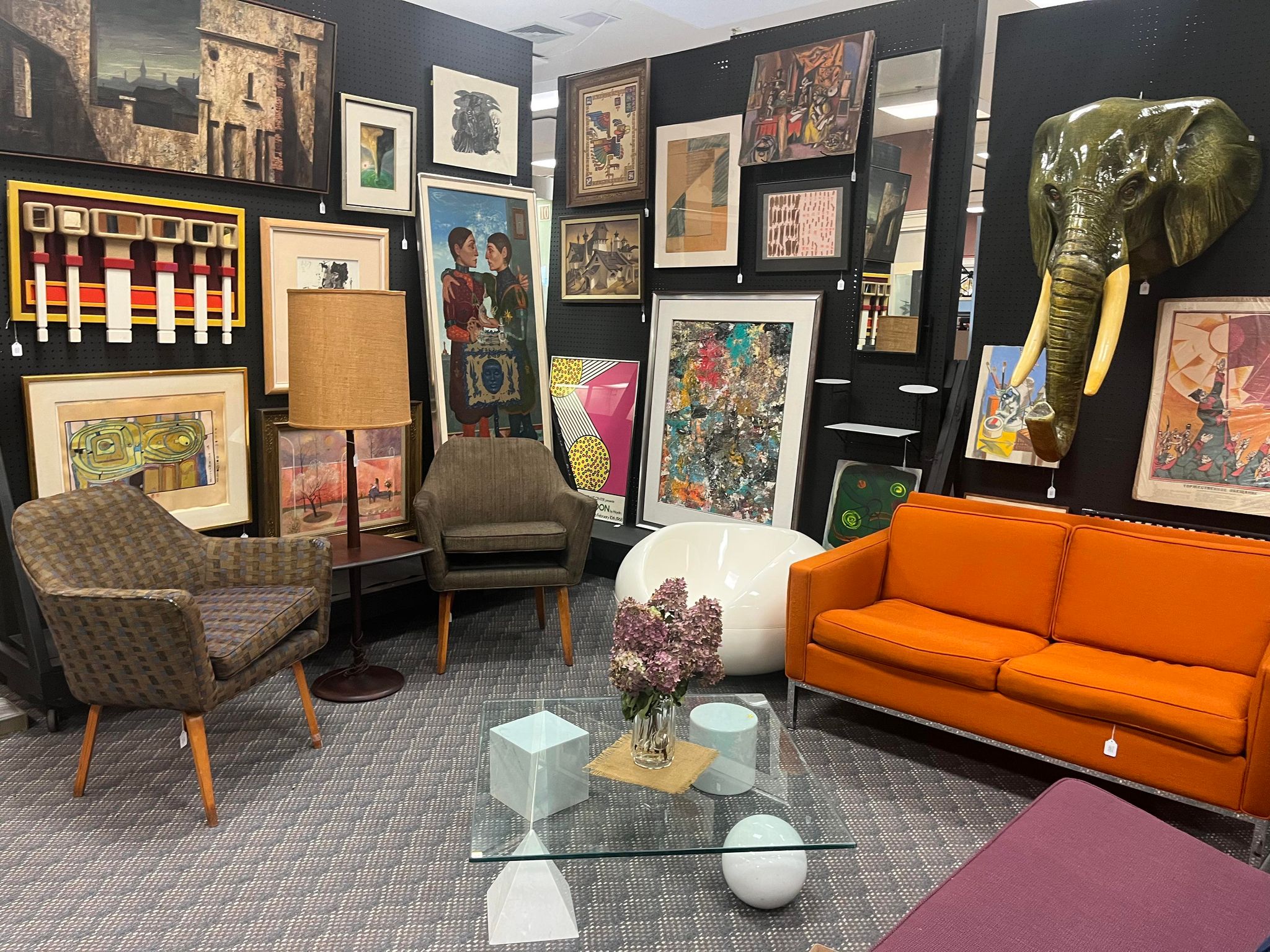Wharton Esherick: Master of the Modern Chair - Blending Art with Functionality

Wharton Esherick: Master of the Modern Chair - Blending Art with Functionality
Edited by: Christian Answini I Fine Arts Specialist
Wharton Esherick (July 15, 1887 – May 6, 1970), often hailed as the "Dean of American Craftsmen," was a pivotal figure in the evolution of modern American furniture design, particularly renowned for his groundbreaking work with chairs. His journey from a painter to a master woodworker marked a significant transition in the early 20th century, blending functionality with artistic expression.
Early Life and Artistic Beginnings
Born in 1887 in Philadelphia, Esherick began his artistic career as a painter. He studied at the Philadelphia Museum School of Industrial Art and the Pennsylvania Academy of the Fine Arts, where he was exposed to various artistic styles. However, it was his experimentation with woodcuts that eventually steered his path towards woodworking.

Transition to Woodworking
Esherick's move to woodworking was not just a change of medium but also a philosophical shift. He began to see wood not just as a material but as a medium with intrinsic beauty and potential for artistic expression. This transition was gradual but marked a significant deviation from his earlier work.
A Philosophy of Organic Design
Esherick’s design philosophy was deeply influenced by organic forms. He believed that furniture should be an extension of the natural beauty of wood, a philosophy that was in stark contrast to the prevailing trends of his time. This approach led him to create pieces that were unique and fluid, challenging traditional notions of furniture design.

The Chairs: Masterpieces of Design
Esherick's chairs are perhaps the most illustrative examples of his philosophy. Each piece was unique, crafted with a deep understanding of the material and a disregard for conventional design rules.
The Hammer-handle Chair
Created in the 1930s, the Hammer-handle Chair is a testament to Esherick’s innovative approach to design and material. Using discarded hammer handles, he crafted a chair that was not just functional but also a statement piece, showcasing his commitment to sustainability.
The Sculptural Chairs
Esherick’s sculptural chairs were revolutionary. They defied traditional forms, instead embracing flowing lines and organic shapes. His Music Stand Chair, created in 1946, is an exemplary piece of this genre, combining utility with unparalleled artistic beauty.

The Three-legged Chairs
His three-legged chairs were a study in balance and stability. These pieces, with their asymmetrical forms, challenged the norms of chair design, showcasing Esherick's mastery over his craft and his willingness to experiment.
Evolution of Style
Over the years, Esherick’s style evolved from relatively traditional forms to more sculptural and abstract designs. This evolution was a reflection of his growing confidence in his medium and his desire to constantly push the boundaries of what was possible with wood.
Influence on Contemporary Design
Esherick's work significantly influenced the studio furniture movement in the United States. His approach to design and his use of wood as an expressive medium inspired a generation of designers and craftsmen. He opened up new possibilities in furniture design, blending form and function in unprecedented ways.
Sustainable Practices
Esherick was ahead of his time in his approach to sustainability. His use of discarded materials, like in the Hammer-handle Chair, showcased his commitment to reducing waste and his respect for the material. This aspect of his work is increasingly relevant in today's context of environmental consciousness.
The Wharton Esherick Museum
Today, Esherick’s legacy is preserved at the Wharton Esherick Museum in Pennsylvania, which was his home and studio. The museum offers a comprehensive look at his work and is a testament to his lasting impact on the world of design.

Conclusion
Wharton Esherick's chairs are not just pieces of furniture; they are enduring symbols of the fusion between art and utility. His work challenged conventional design paradigms and paved the way for future generations of designers. Esherick's legacy lies in his ability to see beyond the functional aspects of furniture, transforming everyday objects into works of art. Check out our upcoming Mid-Century Modern & Design auction on November 16th for a special highlight item - a piece by Wharton Esherick.
.jpg)
Our Mid-Century Modern & Design auction will feature lot #4134 • Wharton Esherick Sculptural Curvilinear Chair
Bid before November 16th at 10:00 AM by visiting the link below
Mid-Century Modern & Design I November 16th at 10:00 AM
In-Person Preview at Hafield
501 Fairgrounds Road, Hatfield, PA 19440
Monday, November 13th from 9:00 AM – 3:00 PM
Tuesday, November 14th from 9:00 AM – 3:00 PM
Wednesday, November 15th from 9:00 AM – 3:00 PM











